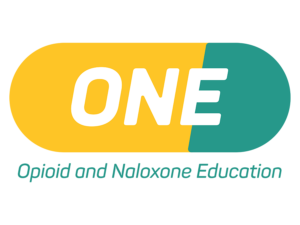
The opioid epidemic continues to challenge public health efforts across the United States, with each state dealing with unique policy landscapes and responses.
Article submitted by: Shraddha Adhikari
Graduate Research Assistant | ONE program
Masters of Public Health student | NDSU
Despite a decline in opioid prescriptions, North Dakota faces persistent challenges related to opioid misuse and associated harms, including rising opioid-related deaths.
To address these challenges, researchers from the ONE (Opioid and Naloxone Education) Program at NDSU conducted an environmental scan of North Dakota’s opioid safety policies.
The research aimed to conduct an in-depth environmental scan of North Dakota’s opioid policies. Using Shaver’s model, which assesses six best practice domains related to opioids, the study evaluated the alignment of policies with best practice standards. The domains included opioid prescribing regulation, medical and behavioral health practices, prevention and education indicators, emergency response statutes, opioid use data collection, and Medicaid expansion and utilization.
North Dakota opioid-related policy scores ranged from 2.9-3.9 (Table 1). Those found to be in alignment with essential public health best practice standards were: Emergency response statutes (3.94), Opioid prescribing regulation (3.91), Prevention and education indicators (3.59), Opioid use data collection (3.24), and Medicaid expansion and utilization (3.32). The medical and behavioral health domain was found to be inadequate and not up to best practice (2.96).
Table 1: Best Practice Domain Scores
| Best Practice Domains | Scores |
| Emergency Response Statutes | 3.94 |
| Opioid Prescribing Regulation, Limits and Monitoring | 3.91 |
| Prevention and Education Indicators | 3.59 |
| Medicaid Expansion and Utilization | 3.32 |
| Opioid Use data collection | 3.24 |
| Medical and Behavioral Health Practice | 2.96 |
Each of the six best practice domains are comprised of 15 variables (Figure 1). The exemplary variables (those above the upper red line) included the state’s Prescription Drug Monitoring Program (PDMP), regulations on opioid prescriptions, prevention programs, and access to naloxone. The adequate variables (those between the upper and lower red line) included the opioid task force, regulation of pill mills, informed consent for opioid treatment, continuing medical education (CME) on opioids, Good Samaritan laws, reporting of overdose cases, neonatal abstinence syndrome (NAS), and Medicaid expansion. The inadequate variables (those below the lower red line) were non-opioid pain management, referral and access to treatment for opioid addiction, and Medicaid utilization.

To address the areas where the state is lagging behind, specific recommendations are summarized in Table 2.
Table 2: Recommendations for Areas Lagging Behind
| Inadequate Variables | Recommendations |
| Non-Opioid chronic pain management |
|
| Referral and access to treatment |
|
| Medicaid Utilization |
|
North Dakota opioid-related policies were found to be in close alignment with the public health best practice standards, however, actual implementation at the community level could be improved. Treating individual patients is necessary, but there is an insufficient approach to improve population health outcomes. A policy, systems, and environment (PSE) approach that addresses the population is needed. Further, opioid funding agencies need to use more strategic planning for how they allocate their funding, and implementers of federal opioid funding need to align their work with best practices. All of the stakeholders in the opioid space need to come together and task forces and consortiums need to be strengthened.
In conclusion, this evaluation highlights the importance of evidence-based policy evaluation in addressing complex public health challenges like the opioid epidemic. North Dakota and similar states can enhance their policies and interventions to address opioid misuse and improve outcomes for individuals and communities by utilizing proven best practices and identifying areas that need improvement. The full-text article can be found in (2) (PDF) Evaluation of Policy Support for Opioid Mitigation in a Midwestern State Using Best Practice Domains (researchgate.net)
 ONE (Opioid and Naloxone Education) is an innovative approach to screen and educate patients who receive prescribed opioid medications at participating community pharmacies in the state of North Dakota.
ONE (Opioid and Naloxone Education) is an innovative approach to screen and educate patients who receive prescribed opioid medications at participating community pharmacies in the state of North Dakota.

